Cyber Monday is the Super Bowl for e-commerce. The digital doors swing open, and millions of shoppers flood the internet, all of them looking for the best deals to satisfy their holiday wish lists.
Last year, shoppers spent a staggering $13.3 billion online on Cyber Monday alone in what turned out to be the biggest online shopping day of all time. That’s a massive wave of potential customers, and if your website isn't ready, that wave can crash right over you.
A slow, buggy, or completely down website on the biggest online shopping day of the year isn't just an inconvenience; it’s a direct hit to your bottom line. You've spent weeks, maybe months, preparing your marketing campaigns, curating your deals, and building up hype.
Now it's game time. In this guide, we'll walk through how you can prepare your website to handle the massive surge in traffic, ensuring you provide a smooth, fast, and profitable experience for every visitor.
Let's dive into the steps you need to take to get your site in fighting shape for the big day.
Start with a Performance Audit
Before you can fix any problems, you need to know where and what they are. Think of this as a pre-season physical for your website. A thorough performance audit will show you exactly how your site holds up under pressure and pinpoint the weak spots that need attention.
How Fast is Your Site, Really?
Speed is everything in e-commerce. A one-second delay in page load time can lead to a 7% reduction in conversions.
For a site making $100,000 per day, that one-second delay could cost you well over $2.5 million in lost sales every year. You can’t afford to be slow, especially when shoppers are bouncing between dozens of sites looking for deals.
To avoid this, use tools like Google PageSpeed Insights, GTmetrix, or Pingdom, which will give you a baseline reading of your site’s performance. These tools will give you a grade and provide a detailed report on what’s slowing you down.
Pay close attention to metrics like:
-
Time to First Byte (TTFB): This measures how long it takes for the server to send back the first piece of information. A high TTFB points to server-side issues.
-
Largest Contentful Paint (LCP): This tells you how long it takes for the main content of the page to load. It’s a key indicator of the user’s perceived loading experience.
-
First Input Delay (FID): This measures how long it takes for your site to respond to a user’s first interaction, like a click. A long delay here is incredibly frustrating for users.
Identify Your Bottlenecks
Your audit will likely highlight a few common culprits that slow sites down. These are your bottlenecks, and they're what you need to focus on fixing first.
Some common issues include unoptimized images, bloated code (like excessive JavaScript or CSS), and slow third-party plugins. Addressing these low-hanging fruits can give you a significant speed boost with minimal effort.
Optimize Your Website's Foundation
Once you know what’s wrong, it’s time to start fixing it. Optimizing your site’s core components is crucial for handling high traffic without breaking a sweat.
1. Choose the Right Hosting Plan
Your hosting plan is the plot of land your website is built on. If it's too small, things get crowded and slow down quickly.
A shared hosting plan might be fine for a normal Tuesday, but it’s a recipe for disaster on Cyber Monday. When you’re on a shared server, you’re sharing resources with hundreds of other websites. If one of them gets a traffic spike, your site suffers too.
Consider upgrading your hosting plan at least a few weeks before the holiday season kicks off.
Look into options like:
-
Virtual Private Server (VPS): This gives you a dedicated portion of a server’s resources. It’s a great step up from shared hosting and offers more stability.
-
Dedicated Server: You get an entire server to yourself. It's more expensive but provides maximum performance and control.
-
Cloud Hosting: This option offers incredible scalability. Resources can be automatically adjusted to meet demand, so you can handle sudden traffic spikes without a hitch. Services like Amazon Web Services (AWS) or Google Cloud are leaders in this space.
Talk to your hosting provider about your expected traffic levels and see what they recommend. Many offer scalable solutions specifically for events like Cyber Monday.
2. Compress and Lazy Load Your Images
Images are often the heaviest elements on a webpage. High-resolution product photos are essential for showing off your goods, but they can grind your site to a halt if they aren't optimized.
Before you upload any image, run it through a compression tool like TinyPNG or ImageOptim. These tools can reduce file size by up to 70% without a noticeable drop in quality.
Next, implement lazy loading. This technique defers the loading of images that are not yet in the user’s viewport. Instead of loading every single image on a long category page at once, the browser only loads them as the user scrolls down.
This dramatically improves initial page load times and saves bandwidth. Most modern e-commerce platforms have plugins or built-in settings for enabling lazy loading.
3. Leverage a Content Delivery Network (CDN)
A Content Delivery Network, or CDN, is one of the most effective ways to speed up your website for a global audience. A CDN is a network of servers distributed around the world. It works by storing cached copies of your website's static content, like images, CSS, and JavaScript files, on these servers.
When a user visits your site, the CDN delivers the content from the server that is geographically closest to them.
For example, if your main server is in Dallas but a shopper is in London, the CDN will serve your site’s assets from a server in Europe. This drastically reduces latency and speeds up loading times. Popular CDN providers include Cloudflare, Akamai, and Fastly. Many offer free plans that are perfect for small to medium-sized businesses.
Test Your Site to Its Limits
You wouldn't launch a rocket without running simulations first, so why would you go into Cyber Monday without testing your site’s limits? Stress testing, also known as load testing, simulates high traffic conditions to see how your website and server respond under pressure.
How to Conduct a Load Test
Load testing involves using tools to send a large number of virtual users to your website simultaneously. This helps you find your site’s breaking point. You can see how many concurrent users it can handle before performance starts to degrade or the server crashes completely.
Tools like LoadRunner, JMeter, or K6 allow you to configure realistic test scenarios. You can simulate users browsing product pages, adding items to their carts, and going through the checkout process. This is important because different actions put different kinds of strain on your server.
Analyze the Results and Make Adjustments
Run the test and watch what happens. Does your site slow to a crawl at 500 concurrent users? Does the checkout process fail at 1,000? The results will give you a clear picture of where your system’s weaknesses lie.
Maybe your database can't handle the number of queries, or perhaps a specific third-party plugin is causing a bottleneck.
Armed with this data, you can go back to your development team or hosting provider to make targeted improvements. You might need to optimize database queries, upgrade your server’s RAM, or find a more efficient alternative to a slow plugin.
Run the tests again after making changes to verify the fix. Repeat this process until you're confident your site can handle the expected Cyber Monday surge (and then some…you never know what will happen, after all).
Streamline the Customer Journey
A fast website is great, but a confusing or clunky user experience will still send customers running.
On Cyber Monday, shoppers are impatient. They want to find what they're looking for, add it to their cart, and check out as quickly as possible.
Simplify Your Checkout Process
Did you know that the average cart abandonment rate is nearly 70%? A complicated checkout process is a major contributor to this. Now is the time to streamline it.
-
Offer Guest Checkout: Forcing users to create an account is a major conversion killer. About 26% of shoppers will abandon their cart if they have to create a new user account. Allow customers to check out as guests to remove this friction.
-
Reduce Form Fields: Only ask for the information you absolutely need. Do you really need their phone number and date of birth? Every extra field is another reason for a shopper to give up.
-
Provide Multiple Payment Options: Offer a variety of payment methods, including credit cards, PayPal, and digital wallets like Apple Pay and Google Pay. The more options you provide, the more likely you are to have one your customer trusts and prefers.
Create a Plan for Out-of-Stock Items
With the rush of sales, popular items are going to sell out. How your website handles this can make a big difference. Don’t just show a disappointing "Out of Stock" message. Instead, turn it into an opportunity.
Allow your customers to sign up for back-in-stock notifications. This lets you capture their email address and turn a potentially lost sale into a future conversion. You could also recommend similar, in-stock products on the page to redirect their interest.
Don't Let Your Hard Work Go to Waste
Preparing your website for the Cyber Monday traffic surge is a major undertaking. It requires careful planning, technical optimization, and rigorous testing.
Getting it right means you can capitalize on the biggest shopping day of the year, providing a seamless experience that turns visitors into loyal customers. Getting it wrong could mean a day of frantic server reboots and missed revenue.
Feeling overwhelmed? You don’t have to do it all on your own.
At Kinetic319, we specialize in creating robust, high-performance digital experiences that drive results. From comprehensive site audits to full-scale e-commerce optimization, our team of experts can ensure your website is ready for Cyber Monday and beyond. Let us handle the technical details so you can focus on what you do best: running your business.
Contact Kinetic319 today to learn how we can help you prepare for the surge and maximize your holiday sales.

